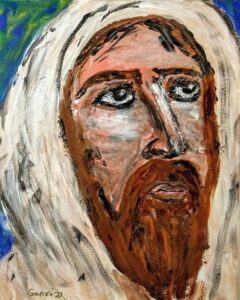The Gospel is the good news of Jesus Christ. It is the message that He came to save us from our sins. The Gospel is also the proof of the veracity of the Gospel. If the Gospel is true, then it must be evidenced by changed lives. And this is exactly what we see in the Gospels. People who were once lost and living in sin are now living lives that are transformed by the power of God.
What is the Gospel?
The Gospel is the good news of salvation through Jesus Christ. It is the message that God loves us, that He sent His Son to die for our sins, and that through Him we can be reconciled to God. The Gospel is the power of God for salvation to everyone who believes (Romans 1:16).

The Gospel is not just a story or a set of beliefs. It is the power of God Himself working in our lives. When we trust in Jesus Christ as our Savior, He comes into our hearts and changes us. We are given new life – eternal life! – and we are transformed. The Gospel brings hope and joy and peace. It gives us strength to face difficulties and comfort in times of sorrow. It is the light that guides us through this dark world.
The Gospel is the good news that Jesus Christ came to save sinners (1 Timothy 1:15). He died on the cross, taking the punishment we deserve, and rose again so that we could have new life in Him. If we repent of our sins and put our faith in Jesus Christ, He will forgive us and give us eternal life. This is the promise of the Gospel!
The Importance of the Gospel
The gospel is the good news about what Jesus Christ has done for us. It is the message of salvation that God offers to us through faith in Jesus Christ. The gospel is the power of God unto salvation (Romans 1:16).
The gospel is important because it is the only message that can save us from our sin. It is the only message that can give us eternal life. The gospel is also important because it tells us who Jesus is and what He has done for us.
The Different Types of Proof
There are four different types of proof for the veracity of the Gospel:
 1. Historical Proof: This type of proof looks at the historical events surrounding the life of Jesus to see if they match up with what is written in the Bible. For example, did Jesus really exist? Was he born in Bethlehem? Did he perform miracles?
1. Historical Proof: This type of proof looks at the historical events surrounding the life of Jesus to see if they match up with what is written in the Bible. For example, did Jesus really exist? Was he born in Bethlehem? Did he perform miracles?
2. Archaeological Proof: This type of proof looks at archaeological evidence that supports the Biblical account. For example, have any artifacts been found that help to verify the Biblical story?
3. Eyewitness Testimony: This type of proof looks at the testimony of those who witnessed the events surrounding the life of Jesus. For example, did anyone write about what they saw happening during Jesus’ lifetime?
4. Theological Proof: This type of proof looks at how the message of the Gospel fits with what we know about God and His character. For example, does the Gospel message align with what we know about God’s love and mercy?
The Historical Evidence for the Gospel
The Gospels are a reliable historical source because they were written by eyewitnesses (or people who interviewed eyewitnesses) and because they were written early, close to the events they describe.
The Gospel of Mark is the earliest Gospel, probably written around A.D. 70, just thirty-five years after the crucifixion of Jesus. The other Gospels were all written within the next fifty years. This means that the people who wrote them, or who interviewed people who witnessed the events, were still alive when the Gospels were written.
This is important because it means that there was no time for legend or myth to develop around the life of Jesus. The Gospels were not written to promote a religious agenda; they were simply recording what happened.
In addition, there are many other ancient sources that confirm the basic story told in the Gospels. For example, the historian Josephus mentions Jesus in his book Antiquities of the Jews, and Tacitus mentions him in his Annals of Imperial Rome. Even if we didn’t have the Gospels, we would still know quite a bit about Jesus from these other sources.
The Archaeological Evidence for the Gospel
The Archaeological Evidence for the Gospel:
The first archaeological evidence for the Gospel comes from a fragment of a copy of the Gospel of Mark, which was found in Egypt and dates back to the early second century. This fragment is significant because it is one of the earliest eyewitness accounts of the Gospel that we have. It is also significant because it shows that the Gospel was being circulated widely at a very early date.
Other important archaeological evidence for the Gospel includes:
– The Rylands Papyri: This is a fragment of the Gospel of John, which was found in Egypt and dates back to the early second century.
– The Chester Beatty Papyri: This is a collection of papyrus fragments containing parts of all four Gospels (as well as some other New Testament books). It was found in Egypt and dates back to the third century.
– The Codex Sinaiticus: This is one of the oldest and most complete copies of the Bible, which includes all four Gospels (as well as other New Testament books). It was found in Egypt and dates back to the fourth century.
The Textual Evidence for the Gospel
 There are four main types of evidence for the gospels: textual, archaeological, historical, and theological.
There are four main types of evidence for the gospels: textual, archaeological, historical, and theological.
Textual evidence is the most important type of evidence for the gospels. This is because the text of the gospels is the primary source of information about the life and teachings of Jesus Christ. The New Testament manuscripts are some of the oldest surviving documents from antiquity, and they provide a wealth of information about the gospels.
The earliest surviving manuscript of a gospel is from around 125 CE. It is a fragment of the Gospel of John known as Papyrus 52. This fragment contains John 18:31-33,37-38, which includes part of the account of Jesus’ trial before Pilate. There are also many other early manuscripts that contain small portions of one or more gospels.
The vast majority of New Testament scholars believe that the four canonical gospels were written between 70 and 100 CE. These scholars base this conclusion on a number of factors, including internal evidence within the texts themselves and external evidence from early Christian writers such as Justin Martyr and Irenaeus.
There are numerous non-canonical gospels that were written in the second and third centuries CE. These works include The Gospel of Thomas, The Gospel of Mary, and The Secret Gospel of Mark. While these texts are not considered to be historically reliable, they do provide valuable insights into early Christian beliefs about Jesus Christ.
Archaeological evidence can also be used
The Manuscript Evidence for the Gospel
The Gospels are ancient eyewitness accounts of the life and ministry of Jesus Christ. They were written by four different men, all of whom were contemporaries of Jesus. The Gospels were written in Greek, the common language of the Mediterranean world at that time.
There are over 5,700 Greek manuscripts (copies and fragments) of the New Testament that have been discovered and catalogued. This is more than any other ancient book. In addition, there are over 10,000 Latin Vulgate manuscripts, as well as many other early versions in other languages such as Syriac, Coptic, and Armenian.
The vast majority of these manuscripts date from the Middle Ages ( AD 500-1500), but there are a small number of earlier ones. The earliest complete copy of the New Testament is the Codex Sinaiticus , which dates from about AD 350 . However, there are a few fragments that date back even earlier than that. For example, there is a piece of papyrus containing part of John 18:31-33 that was found in Egypt and is believed to date from around AD 125 .
This wealth of manuscript evidence is important for several reasons. Firstly, it means that we can be reasonably certain that the text we have today is very close to what was originally written by the Gospel authors. Secondly, it provides us with a check on translations – if a particular translation does not agree with the vast majority of manuscripts then it is likely that it has made some mistake
Conclusion
The Gospel is the holy book of Christianity, and its veracity has been proven time and time again. The stories and teachings found within it have changed the lives of billions of people for centuries, and continue to do so today. If you’re looking for proof that the Gospel is true, all you need to do is look at the impact it has had on countless individuals throughout history.